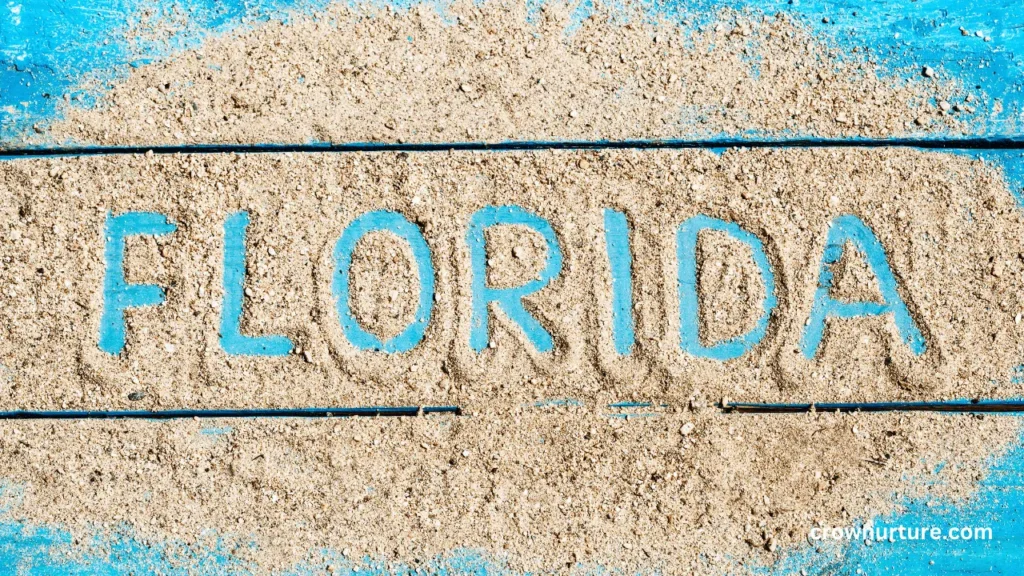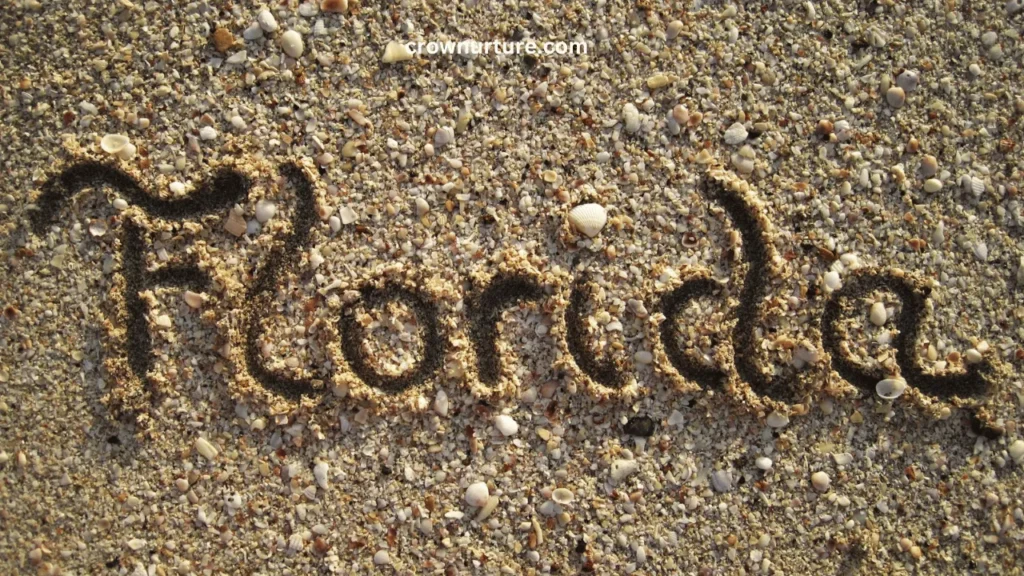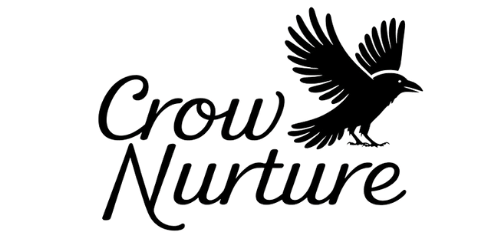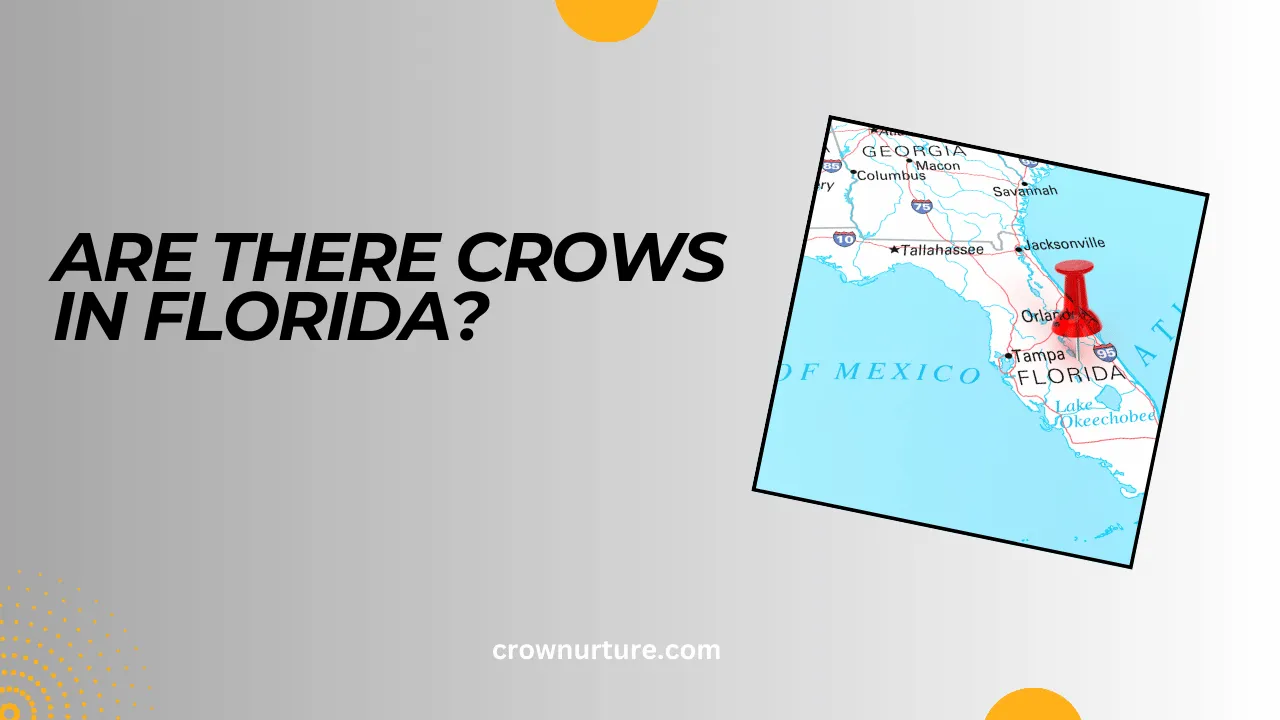Across the vast, sun-kissed landscape of Florida, the call of a crow might seem like just another sound in the background of everyday life. Yet, have you ever stopped to wonder just how much these birds are intertwined with the state’s diverse environments?
From urban streets to quiet rural roads, crows are part of the ecological fabric of Florida, playing a crucial role in both nature and human life. Whether it’s the sight of them flying in large flocks at dusk or their constant scavenging, crows are highly visible and active throughout Florida.
Yes, crows are found in Florida, and they’re more than just a common bird species; they are a key player in the ecosystem, occupying various habitats and even interacting with people in unique ways.
Understanding their distribution, behavior, and the role they play in the environment is essential to recognizing the complexities of Florida’s wildlife. These birds are not just passersby; they are vital residents of the state.
This article dives into the distribution and behavior of crows in Florida, their ecological role, their interactions with humans, and their remarkable intelligence.
Whether you’re a curious birdwatcher or someone simply wondering about these dark-winged residents, you’ll gain a better appreciation for their presence in Florida.

Contents
1. Distribution and Abundance of Crows in Florida
- Widespread Presence:
The American Crow is found throughout Florida, from bustling cities like Miami and Orlando to rural areas and coastal wetlands. Their ability to adapt to a variety of environments has made them a ubiquitous presence in both urban and natural landscapes. Crows can be seen nesting in tall trees in the heart of cities or flying over expansive fields in rural regions. - Seasonal Variations:
Crows in Florida remain mostly resident throughout the year. However, there can be slight seasonal shifts in their population density, especially during migration periods when other species of crows might temporarily pass through Florida. Though these shifts may not be dramatic, they contribute to minor changes in local crow populations. For instance, during the winter months, some crows from northern regions may migrate to Florida in search of warmer climates. - Factors Influencing Distribution:
The distribution of crows in Florida is largely determined by food availability and habitat suitability. Urban areas provide ample food sources, such as garbage and food scraps, making them attractive locations for crows. In contrast, rural and forested areas offer natural food sources like insects and small rodents. Additionally, human activities and development often influence crow habitats, either providing new opportunities or causing habitat loss.
2. Ecological Role of Crows in Florida
- Scavengers and Omnivores:
As omnivores, crows have a diverse diet, which includes fruits, seeds, small animals, and even garbage. This broad diet allows them to act as scavengers, cleaning up decaying organic matter, which helps prevent the spread of disease and maintains ecosystem health. Their scavenging habits also assist in nutrient cycling, as they help break down and recycle nutrients from dead animals and plants. - Seed Dispersal:
Crows contribute to seed dispersal, playing a vital role in helping plants regenerate. As they consume fruits and nuts, they deposit seeds in new locations through their droppings or by caching them for later consumption. This unintentional behavior promotes the growth of plants in areas where the seeds might not have naturally reached, enhancing biodiversity. - Predation and Pest Control:
Crows also help manage pest populations. By hunting and consuming insects, small rodents, and even eggs of other birds, they help maintain balance within the ecosystem. Their role in controlling pest populations is crucial, especially in agricultural areas where they can prevent crop damage from rodents and insects. - Impact on Other Species:
While crows benefit many species, they can also compete with other birds for food and nesting sites. In areas with limited resources, crows may drive away smaller species or claim prime nesting locations, potentially disrupting local bird populations. This competitive behavior is just part of the dynamic web of interactions in Florida’s ecosystems.

3. Interactions with Humans
- Benefits to Humans:
While crows sometimes cause frustration, they offer numerous benefits to humans. As natural pest controllers, crows help reduce the need for chemical pesticides in some areas. Additionally, by cleaning up food waste, they contribute to keeping urban and suburban areas free of organic waste. Their role in maintaining ecosystem balance indirectly supports human health by keeping the environment cleaner and more stable. - Conflicts with Humans:
On the flip side, crows can sometimes create conflicts with humans. In urban areas, they may cause crop damage, especially in agricultural zones where they target ripe crops like corn or berries. Their large flocks can also create noise disturbances in residential areas, and their nests can cause property damage. Additionally, the presence of crows can lead to droppings that may be unsightly or harmful to property. - Human-Wildlife Conflict Mitigation:
Solutions for managing conflicts with crows include the use of non-lethal deterrents, such as visual scare devices or noise deterrents, which can help keep them away from specific areas. Bird-proofing buildings and using netting to protect crops can also be effective. Habitat modification, such as reducing food availability or altering nesting sites, can encourage crows to move elsewhere.
4. Crow Intelligence and Behavior
- Intelligence and Problem-Solving:
Crows are among the most intelligent birds in the animal kingdom, exhibiting problem-solving skills that rival those of some primates. They are known to use tools to obtain food and to demonstrate an ability to plan for the future—a rare skill in the animal world. For example, crows in Florida have been observed using sticks to extract insects from tree bark or other difficult-to-reach places. - Social Behavior:
Crows are highly social animals. They live in complex family groups, and their social structures can include long-term bonds and cooperative behaviors. They communicate using a variety of calls and gestures to coordinate activities like foraging and defending territory. Their ability to recognize individual humans and remember past interactions showcases their sophisticated memory and social awareness. - Cultural Significance:
Crows hold a special place in Florida’s local folklore and mythology, often associated with mystery, intelligence, and omens. They appear in various cultural stories, sometimes symbolizing both good fortune and death. This cultural significance adds another layer of intrigue to the crows that glide through Florida’s skies.
5. The Impact of Crows on Florida’s Ecosystem
- Ecosystem Balance:
Crows are vital for maintaining ecosystem balance in Florida. As pest controllers and seed dispersers, they contribute to the overall health and functioning of both wild and urban ecosystems. Without them, certain pests might overrun agricultural fields or other areas, and plants might struggle to spread their seeds across Florida’s diverse landscapes. - Adaptation to Urban Environments:
Crows are highly adaptable, and their ability to thrive in urban environments is one of their most remarkable traits. They are able to find food and shelter in places that many other wildlife species might avoid, such as parking lots, city parks, and trash bins. This adaptability has allowed them to coexist with humans in ways that few other birds have. - Challenges to Coexistence:
However, the very adaptability of crows can also create challenges. Their growing populations in urban and suburban settings can sometimes lead to conflicts with people, particularly when crows decide to nest in inconvenient or damaging locations. Learning to peacefully coexist with crows while minimizing these issues is crucial for both people and wildlife.
Conclusion
Florida’s crows are not just another bird species—they are an essential part of the state’s ecological landscape. Through their roles as scavengers, seed dispersers, and pest controllers, they contribute significantly to the state’s ecosystem. While they may sometimes create conflicts with humans, their benefits far outweigh their drawbacks when understood in the context of ecological balance.
As we continue to navigate our relationship with these remarkable creatures, it’s essential to find ways to coexist peacefully. Understanding the intelligence, social behavior, and ecological importance of crows can lead to better solutions for mitigating conflicts and appreciating the value they bring to Florida’s natural world. The next time you spot a crow soaring overhead, take a moment to consider how much these clever birds enrich the environment.
FAQs
1. Are crows found in Florida?
Yes, American Crows are present throughout Florida, thriving in urban, rural, and natural environments.
2. Do crows migrate in Florida?
Crows are mostly resident in Florida, but there may be slight seasonal shifts in their population density during migration periods.
3. What do crows eat in Florida?
Crows are omnivores, consuming a variety of fruits, seeds, insects, and small animals, as well as human food scraps.
4. How do crows benefit humans in Florida?
Crows offer benefits like pest control, waste management, and contribute to ecosystem health by promoting nutrient cycling.
5. Do crows cause damage in Florida?
Yes, crows may cause crop damage, create noise disturbances, and damage property with their nests.
6. What is the behavior of crows in Florida?
Crows are intelligent and social, known for their problem-solving skills and ability to recognize individual humans.








